Korg Volca FM Review
With the original Volca range Korg was right there at the peak of the revival of analogue synthesis. With the Volca FM it’s a different story altogether. Andy Jones looks at the company’s latest mobile synth and unearths some surprises, one being the Holy Grail of synthesis: easy FM… Details Price £129 Contact Korg 01908 304600 […]
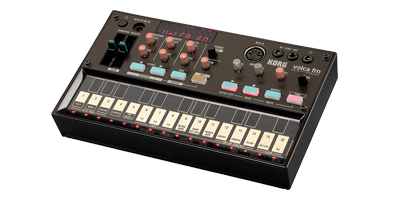
With the original Volca range Korg was right there at the peak of the revival of analogue synthesis. With the Volca FM it’s a different story altogether. Andy Jones looks at the company’s latest mobile synth and unearths some surprises, one being the Holy Grail of synthesis: easy FM…
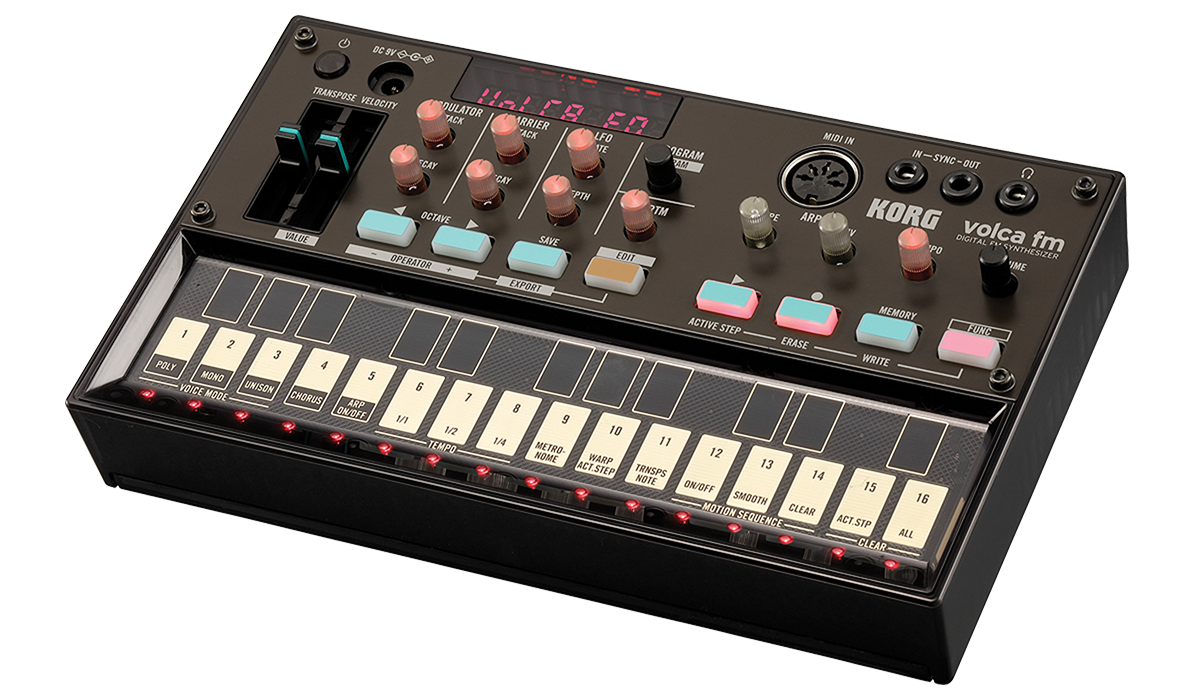


Details
Price £129
Contact Korg 01908 304600
Web www.korg.co.uk
It’s fair to say that with the original Volca range back in 2013, Korg was right there at the analogue cutting edge – wittingly or not – at the right place at the right time. I remember it was my first year back on a music technology magazine after being away for a while and felt like it was 25 years previous: a new Novation BassStation, a new Nord Lead (OK, that’s virtual analogue) and new and relatively cheap analogue gear – something all of the big guns in music gear production had said could never happen ever again.
Yet there was Korg with three Volca synths that recreated all of the fun of analogue, much of the sound (albeit from a small speaker), the playability and tweakability, and in boxes that cost a shade over a hundred quid each.
We loved these Beats, Keys and Bass units– still do in fact – and Korg later added Volca Sample which I looked at in early 2015. That is a more digital affair offering sampling as its raison d’etre and very good it is too.
We said ‘there’s more creativity to be had here than on the other Volcas (and especially with the other Volcas) and we like the nod back to happier, simpler sampling times, as under those limitations creativity blossomed!’ So to Volca FM and the move away from analogue continues, albeit differently…
Easy FM?
As with the Yamaha reface DX keyboard that I reviewed in October last year, Korg is promising a kind of easy FM (Frequency Modulation) synthesis with Volca FM. I say easy but what I mean is easier than the notoriously difficult-to-get-your-head-around synthesis employed on the DX7, surely the most famous FM synth of all time. It was a keyboard that had millions of fans but only a few (notably Brian Eno) could get to the bottom of it. Volca FM (like reface DX) tries to bring FM to the masses.
So FM is based on a fundamental waveform modulated by other waveforms to produce sounds. Both types are generated by operators; the fundamental by a ‘carrier’ operator, the modulating ones by ‘modulators’. Volca FM has six of these with up to 32 combinations (algorithms).
The beauty is that the front panel features the main parameters for these as controls including Envelope Generators. So you get Attack and Decay controls each for modulator and carrier; plus LFO Rate and Depth; together with an ‘Algrtm’ (algorithm select) rotary. As we shall see, these pretty much make Voca FM an incredible sound generating and performance tool, but before we get ahead of ourselves, let’s run through what else is on offer.
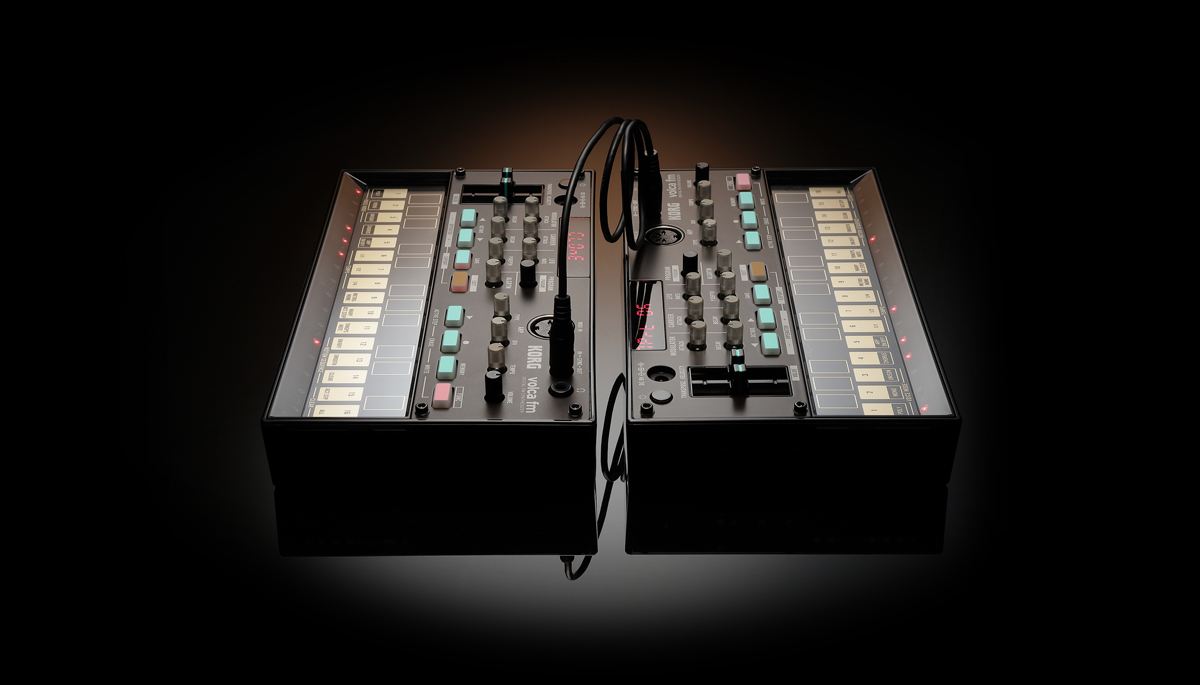
Other Features
There are 16 gold keys that not only function as playable keys but also memory locations for sequences; plus they also give you access to other parameters like Voice Modes (Poly, Unison, Mon etc); tempo variants; metronome controls; and finally parameters for the Motion Sequencer.
The standard sequences are played by pressing the main Play button on the middle right of the fascia and then step through them with the Memory button. Recording onto them is as easy as hitting the Record button and playing along in time; erasing data as easy as clearing per step, all data or clearing during playback.
It’s very easy to get going by editing the ones shipped with the unit but far more fun creating them from scratch or changing the sounds of those chosen with each sequence.
On to the Motion Sequencer, and it has been a Korg staple in its range of Electribes for 15 years and allows you to record knob and button presses and turns.. While fully featured, it is surprisingly simple to use, and offers great ways to vary sequences, with a ‘Smooth’ option to keep changes a little less jagged.
In Use
It’s actually the Motion Sequencer and the main controls that I mentioned – for controlling the stand-out FM parameters – that combine to make Volca FM so creative. With analogue synthesis you’ll know that the frequency and resonance controls will give you all of the impressive drama. Here, though, any number of controls will give you almost as dramatic – albeit less predictable – results, and it is so easy to change one of the presets to get super creative very quickly.
And on to the core sounds, I’d better quickly describe them before I change them too much! Anyone familiar with FM will be at home here, although there is more to it than that before anyone who doesn’t want to be transported back to 1987 starts running for the hills.
There are plenty of fast attack keyboard sounds, organs aplenty and pianos; more than enough strings and pads; guitars and basses; plus lots of, you’ve guessed it, other bells and whistles. OK oh so FM so far and an initial play might under whelm you but wait! Firstly make sure you link Volca FM up to your proper studio speakers to get the best from it as the on-board speaker doesn’t do it justice. Secondly it’s not really the sounds you start with that make Volca FM so cool; it’s what you end up doing with them.
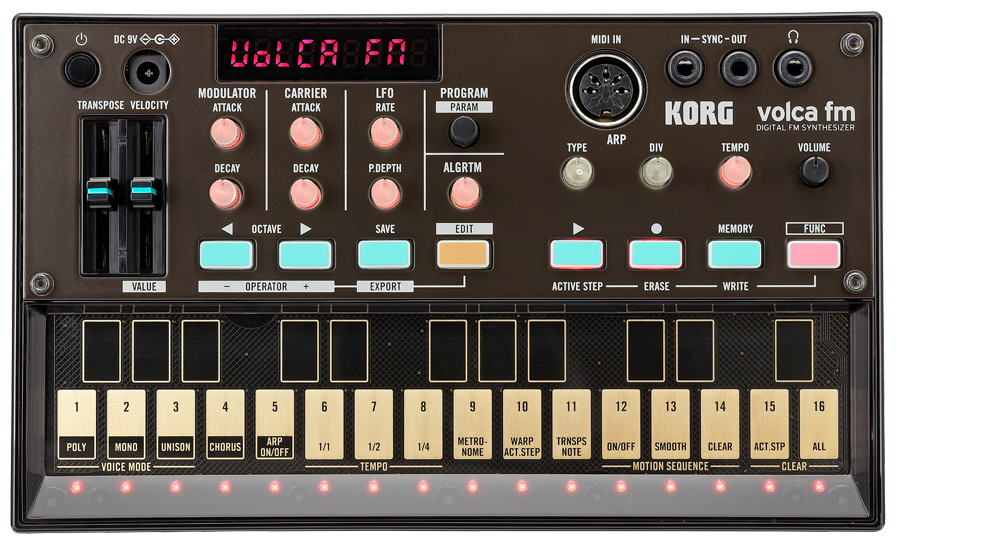
As I’ve said, the Motion Sequencer will take you quickly into an experimental area – just switch between the algorithms as your sequence plays and you’ll have a Radiohead album on your hands. But even just sliding the Velocity fader will give you different results and, more dramatically, switching on the arpeggiator and moving a few controls in real time gets you something way away from the original sound.
I’ve rarely experienced anything quite like it: where the original presets are perhaps a little uninspiring but that doesn’t matter as they can be altered so quickly and easily. It’s what you can do with them that counts and Volca FM – especially switching between 32 algorithms – suddenly shows you what FM synthesis is all about. Sure you still might not understand it, but you’ll make some great sounds with it very quickly!
Before concluding there is just space to cover some other features. You can chain Volca FMs together with others, as before; you can use (probably will use) an optional PSU (you can buy one from Korg UK for £14.89); and there’s a useful parameter list card that shows you how to access numerous other FM parameters if you want to dig deeper. Finally Volca FM is 100% compatible with original DX7 patches – of which there are 1000s available – via plug-ins like MIDIOX, DEXED and NI’s FM7 which really opens the unit up so some incredible synth history.
Alternatives
I’ve already mentioned other gadgets and keyboards that offer a similar ethos to Volca FM in the main text but none of them really match it, nor do everything you get within this unit. The Teenage Engineering PO series offer beats, bass, arcade noises and a lot more over six entertaining units and are silly money, if a little flimsy. The Yamaha reface DX also offers a little less FM power but within a more standard keyboard set-up and I liked it a lot when I reviewed it. Then, of course, there is the rest of the Volca range.

The original three offer the best of analogue or Sample which gives you your own sounds back at you. I’d still say FM does a bit more sonically though. Besides, so much else will do ‘analogue’ so it’s nice to hear something a little bit different in an FM stylee.
Conclusion
The negatives – such as they are – from the original Volcas still largely apply: battery numbers, small speaker, plastic feel and small-ish controls, but so do the positives. Volca FM is surprisingly sturdy and compact, it sounds great and is eminently tweakable. Yet the biggest surprise is that the shift away from analogue has helped rather than hindered the unit.
Since the originals, the world has gone Eurorack crazy for its analogue fix, so perhaps is moving away from ‘cheap’ to ‘bespoke’, perhaps leaving the original trio a little high and dry for some. So FM moves the Volca ethos forward to great effect, reigniting the concept for an altogether different sonic platform and perhaps a different set of users. Along the way it demos that it’s not just analogue that will get you impressive real-time – suddenly you can do it with FM too, and for silly money. I didn’t expect to be quite so blown away by another Volca but three years on this is arguably the best of the five in the range
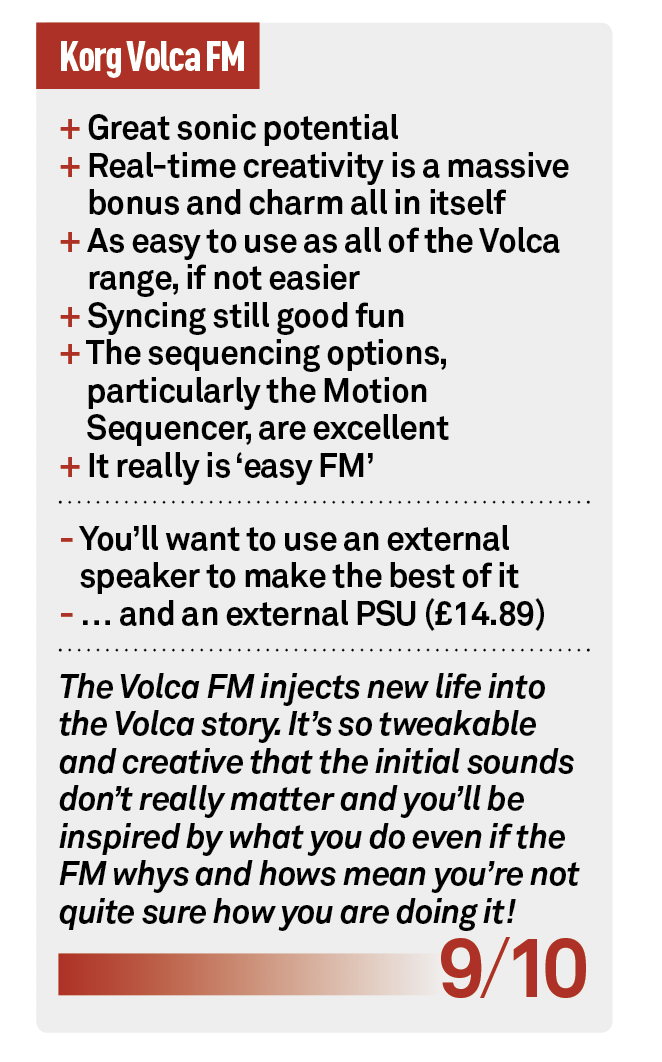
Key Features
● 3-voice FM synth
● 32 programs
● 6 operators, 32 algorithms
● 16 part sequencer
● Pattern chain up to 256 parts
● Arpeggiator: 9 types
● Voice modes: Poly, Mono, Unison
● Connections: Headphone out, Sync in and out (3.5mm jacks)
● Effects: chorus
● Power: 6xAA alkaline batteries (supplied); or AC adapter (DC 9V) (optional)
● Bat life: 10 hours
● Weight (kg): 0.36
● Dimensions
(w x h x d):
193 x 4 x 115
